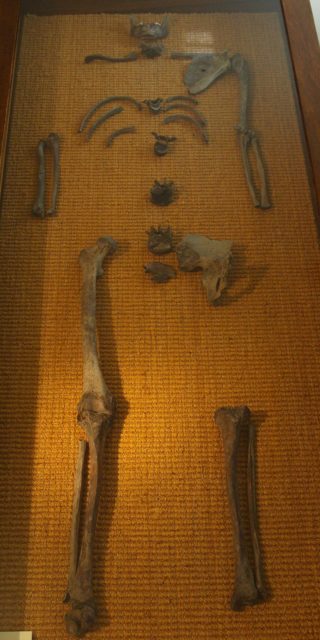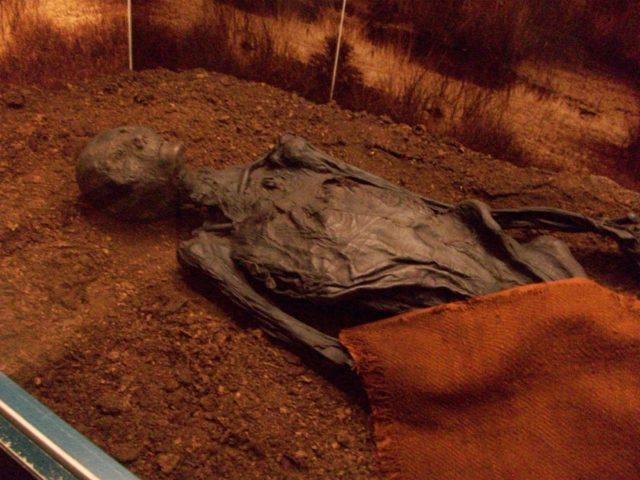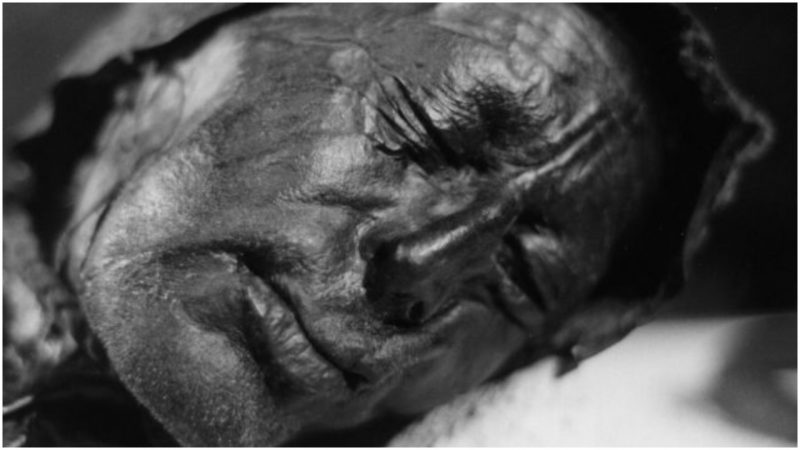Bogs are wetlands found in regions with a temperate climate, such as Ireland, Russia, the Scandinavian countries, Canada, and the northern part of the United States. The rotting of evergreen shrubs and other plant matter creates the bogs and the small sedge grasses hold them in place. The result is sphagnum moss, which, in time, turns into peat moss.
Peat serves a pragmatic modern purpose. Most peat is harvested by drying out the bog, vacuuming the peat, and, after more drying, compressing the material into bales. The mosses are sold in garden stores and nurseries as soil additives because of their water retention and soil-enhancing abilities. Another common use: peat pots for starting seeds. Peat bales are used for insulation and sometimes burned for heat.
Which brings us to … the dead bodies. Untouched bogs may contain peat thousands of years old and yield some remarkable discoveries. Most preserved bodies found in peat to date have been recovered from ancient bogs in Denmark. The acidity of the peat leaks into the water, lending it properties similar to vinegar and that naturally preserve the bodies. The skin is turned into a dark, leathery texture, and the hair turns red from the acidic water and lack of oxygen. Occasionally the clothing is preserved, and any weapons or accouterments stay with the body.

The owners of these bodies sometimes met death in a violent manner and were thrown into the bog. To glean clues, historians and archaeologists examined the works of Tacitus, a Roman historian from the first century AD. He wrote that the Germans killed weaklings and homosexuals and disposed of the bodies in bogs. Researchers formed the opinion that, rather than be weaklings, many of these people were convicted criminals punished by agonizing torture and execution. More typical was the Iron Age funerary custom of cremation.
The Windeby Girl, discovered in a German bog in 1952, was assumed to be an adulteress who was drowned along with her paramour. However, Heather Gill-Robinson of North Dakota State University did further testing on the bodies and discovered that they were both male and that the other body had been deposited into the bog almost 300 years before the Windeby Girl.

One of the best-preserved bodies found in a bog was discovered in 1952 in an area northwest of Copenhagen. It was dubbed the Grauballe Man. Modern research shows that he died at about the age of 34 and was sacrificed more than 2,000 years ago. Human sacrifice was common at the time and often followed a natural disaster such as a flood or destructive storm. According to primitive beliefs, such a disaster was a sign the gods were angry, and a sacrifice was needed to appease them.
A very young child found in a German bog died sometime around 200 BCE–she was dated by analysis of the cloth of the cloak wrapped around her body. No one knows much about Röst Girl aside from the fact that the body was destroyed during World War Two.

The Tollund Man was a bog recovery made in Denmark in 1950. He had lived around the 4th century BC and was so well preserved that when he was discovered, he was erroneously assumed to be a recent victim. A family cutting peat in the Bjældskovdal bog found him and turned the body over to police. When archaeologist P. V. Glob examined it, he determined the body to be around 2,000 years old. The Tollund Man still wore a cap on his head and a noose around his neck. Experts believe he was part of a ritual sacrifice.
His face was so unspoiled one could almost mistake him for someone sleeping. His feet and one of his thumbs were almost perfect. He was even fingerprinted by the police and the grains and seeds found in his stomach analyzed.
The only original part of Tollund Man that remains is his head. In the 1950s, preservation methods were not sufficient to preserve the entire body, so just the head was treated. Once out of the water, these tissues dried out and left only the skeletal remains. The body on display at Silkeborg Museum in Denmark is a re-creation of the original gleaned from photos and an examination of the remaining bones.
Other interesting finds from bogs include over 270 barrels of homemade butter from thousands of years ago in Ireland, ancient swords found in bogs in Sweden and Denmark, and a dugout canoe that is thought to be about 10,000 years old.
